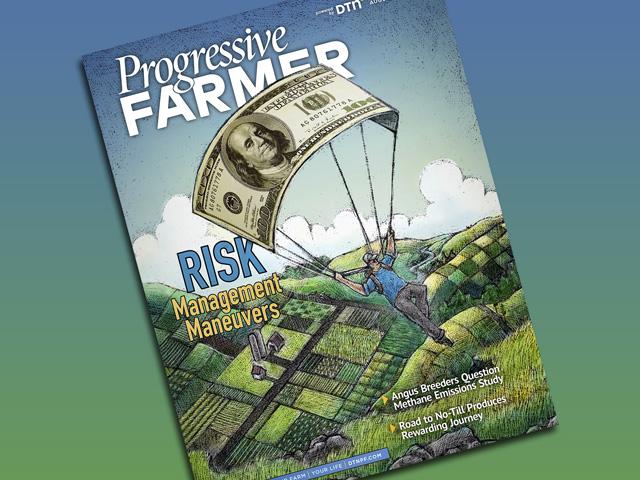Frost Poses Forage Grazing Risks
Livestock Producers Should Be Aware of Toxicity in Some Forages After Frost
REDFIELD, Iowa (DTN) -- As the first frost has hit much of the upper Midwest, cattle producers should be aware of the risk of prussic acid poisoning in livestock.
Many producers graze cover crops in the fall, with a common mix being sorghum, Sudan grass, or a combination of the two. Iowa State University Extension forage specialist Shelby Gruss said that when frost stresses these plants, they accumulate dhurrin, a compound that breaks down into prussic acid.
"If livestock consume forage with elevated prussic acid, it can lead to acute toxicity, muscle twitching, staggering, and even death within minutes," she said.
Producers who have these forages for fall grazing should be aware of the weather and remove cattle from those fields when frost is forecast. Gruss said cattle should stay off these areas for at least seven days.
"If another frost occurs during that week, restart the clock," she added.
P[L1] D[0x0] M[300x250] OOP[F] ADUNIT[] T[]
Following the week off the field where sorghum and/or Sudan grass are present, it's important to scout the field for regrowth. The new growth can contain high dhurrin levels, too. She advises waiting until the regrowth is over 18 inches tall or until a killing frost.
Prussic acid levels typically drop to safe levels for grazing one week after a hard freeze of 28 degrees Fahrenheit for at least four hours.
Assessing the field and inspecting all the plants, even small ones on the interior of a dense stand, is important before allowing cattle back on the field.
Bruss said that if a producer is unsure of the prussic acid levels, a forage test can be done at the Iowa State University Veterinary Diagnostic Laboratory, as well as other labs, before grazing.
COOL-SEASON GRASSES
While cool-season grasses like alfalfa or clovers can pose a slightly higher risk of bloat for a few days after frost, they do not produce prussic acid.
"Even if cattle are adapted to grazing alfalfa, they should be removed from frosted fields," said Bruss. "Watch for wilting, typically five to seven days after the freeze, as this signals a reduced bloat risk."
Bloat risk isn't completely eliminated, however, and if higher temperatures follow the freeze, the bloat risk is present again.
A killing frost, where over half of the plants are dormant, makes the bloat risk drop significantly. Access to a bloat block and turning cattle out into an alfalfa or clover field when they are full can also help prevent bloat.
For help with understanding forage test results or knowing when to graze certain grass species, contact a beef or forage specialist.
Jennifer Carrico can be reached at jennifer.carrico@dtn.com
Follow her on social platform X @JennCattleGal
(c) Copyright 2025 DTN, LLC. All rights reserved.






